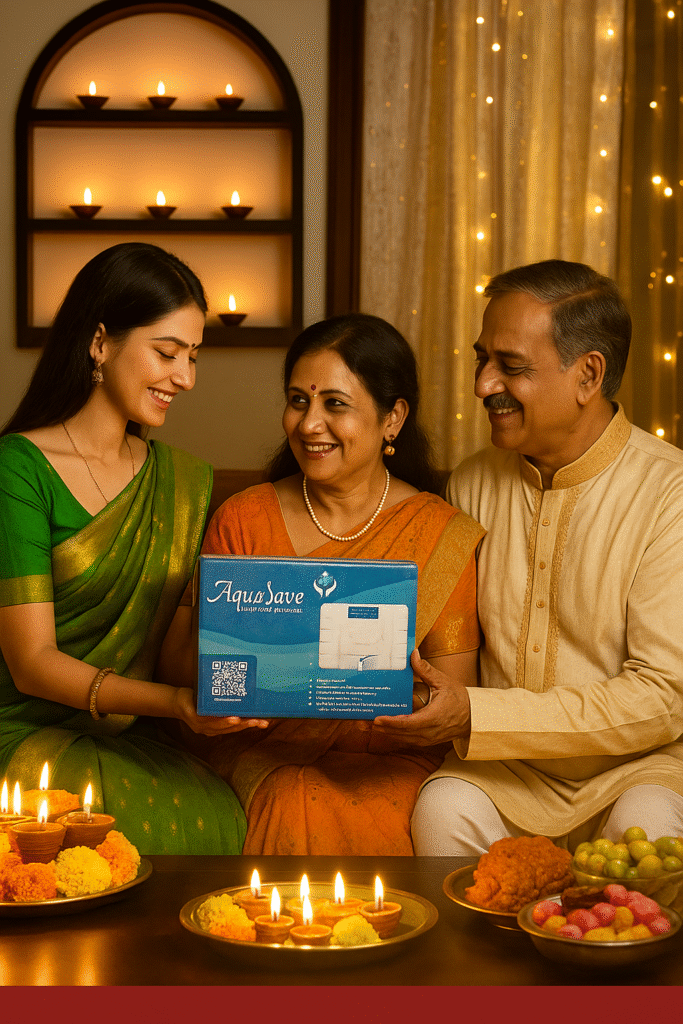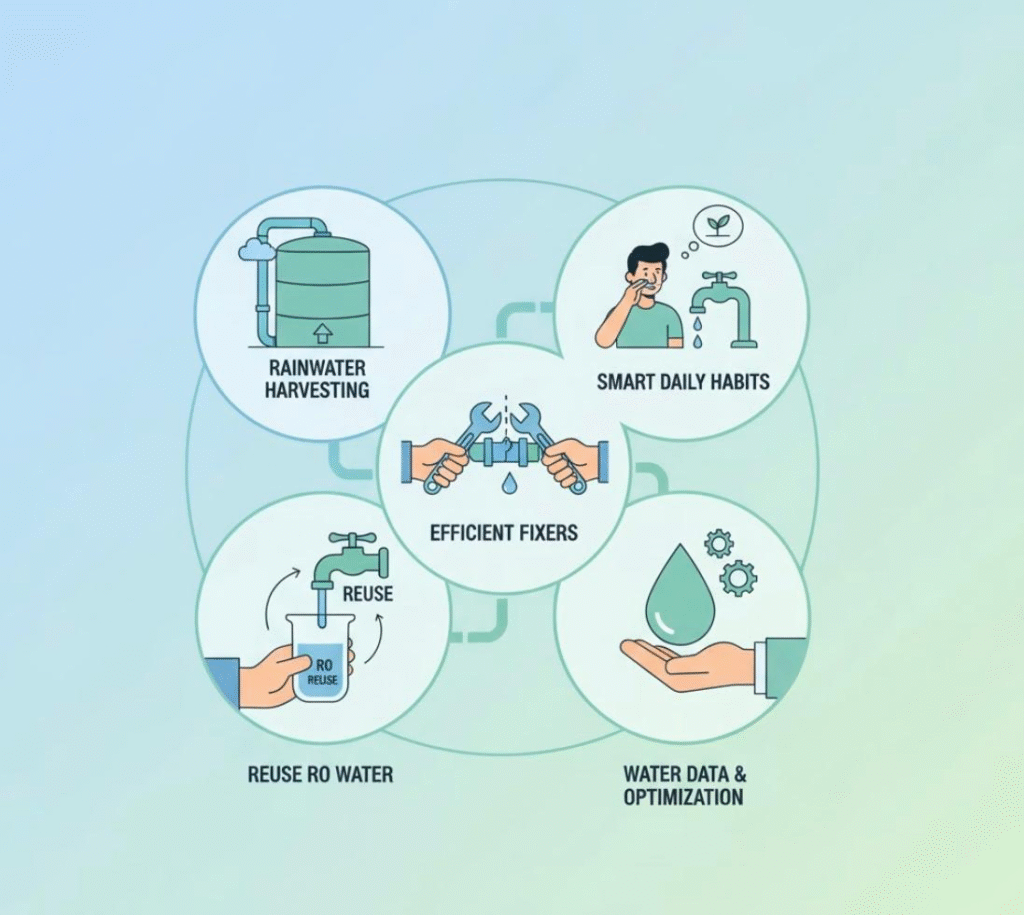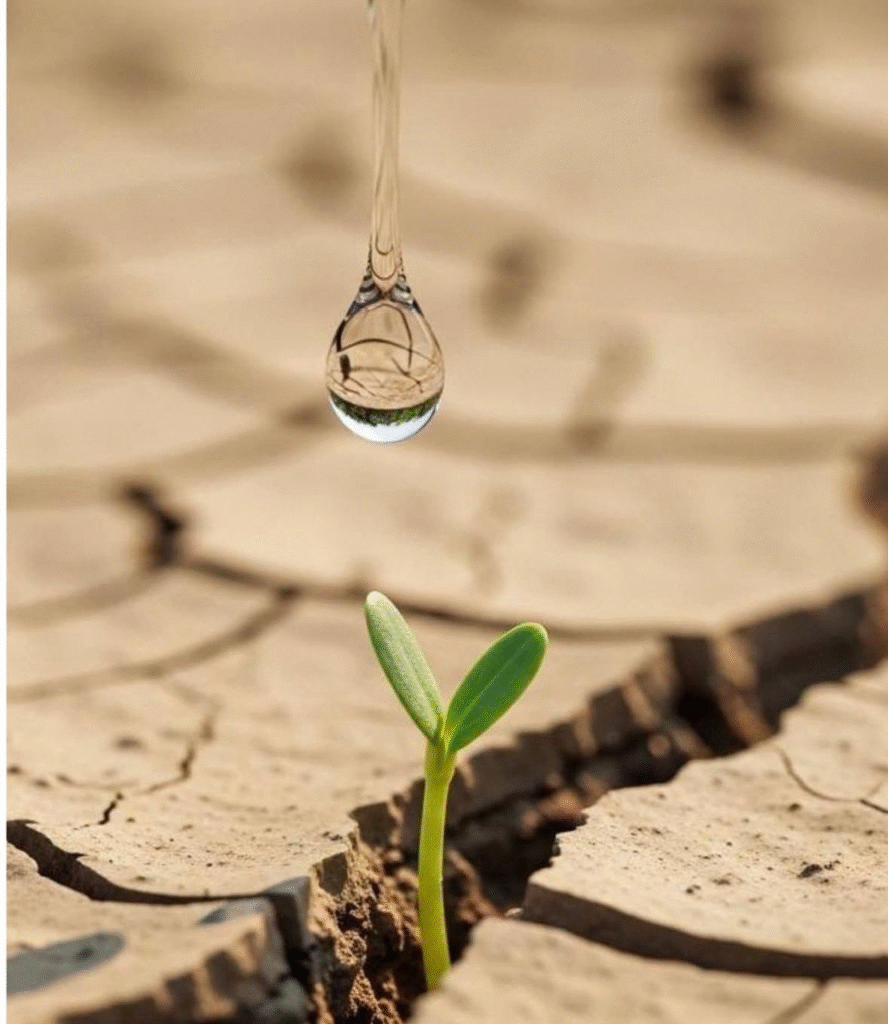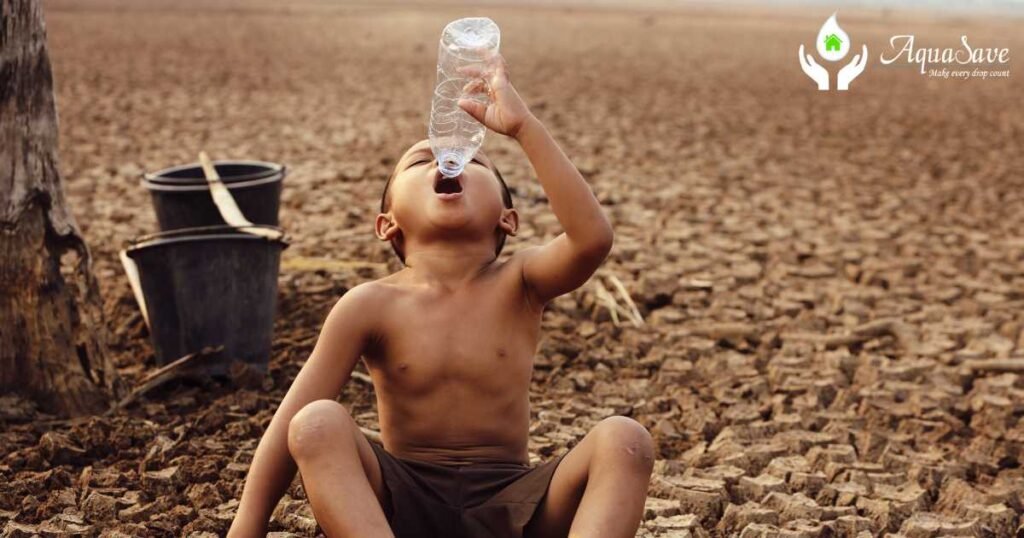Blog
Can RO Reject Water Be Used for Plants?

Can RO Reject Water Be Used for Plants?
If you own a reverse osmosis (RO) water purifier, you’ve likely noticed one thing: for every liter of clean drinking water it produces, 2–3 liters of reject water go down the drain.
That’s a lot of wasted water—especially in India, where water conservation is critical. This brings us to the big question: Can RO reject water be used for plants?
The answer: Yes, but only with precautions. Let’s explore how.
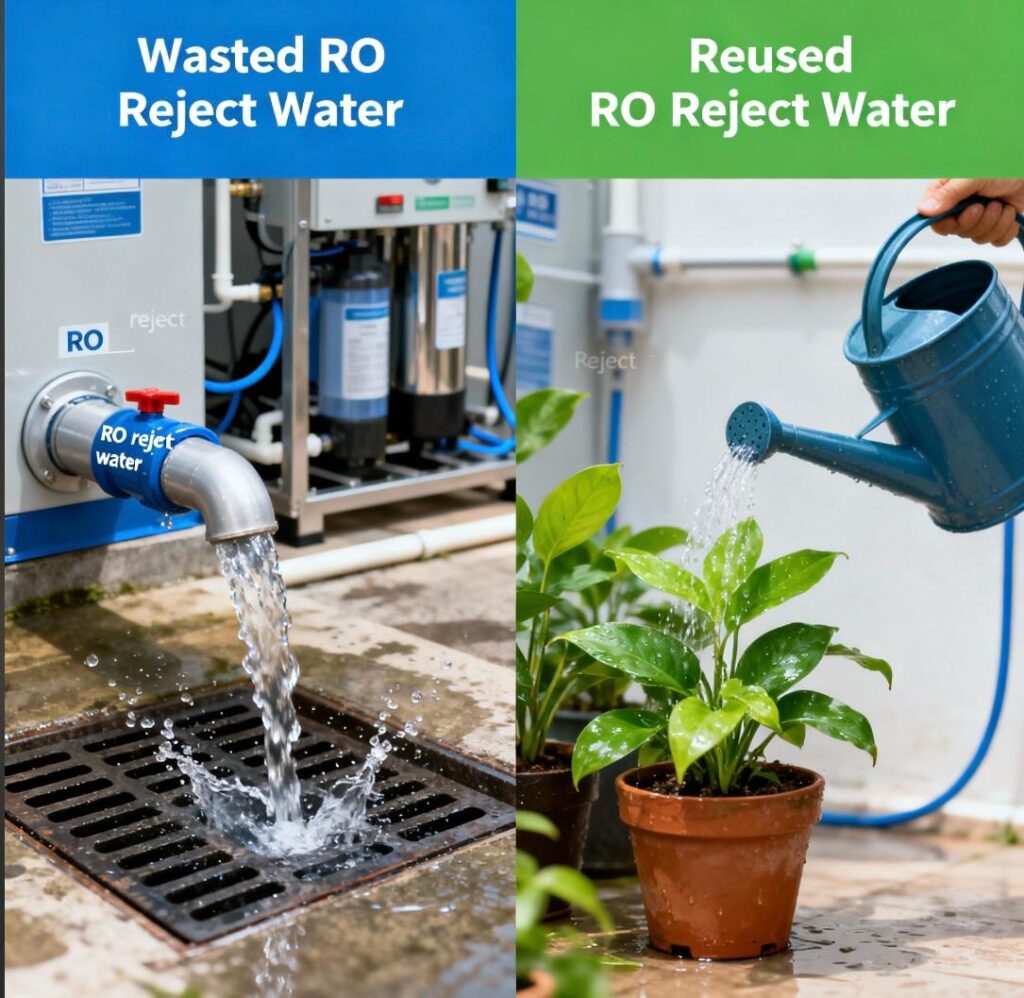
What Is RO Reject Water?
- RO reject water is the byproduct from your purifier.
- It contains dissolved salts, minerals, and sometimes traces of heavy metals.
- Its TDS (Total Dissolved Solids) can range from 500–2000 ppm or more.
Unlike filtered water, reject water is not safe for drinking—but that doesn’t mean it’s useless.
✅ Benefits
- Water conservation: Saves 2–3 liters per liter of RO water.
- Non-potable use: Prevents wastage of otherwise discarded water.
- Suitable for hardy plants: Some species thrive in slightly saline soil.
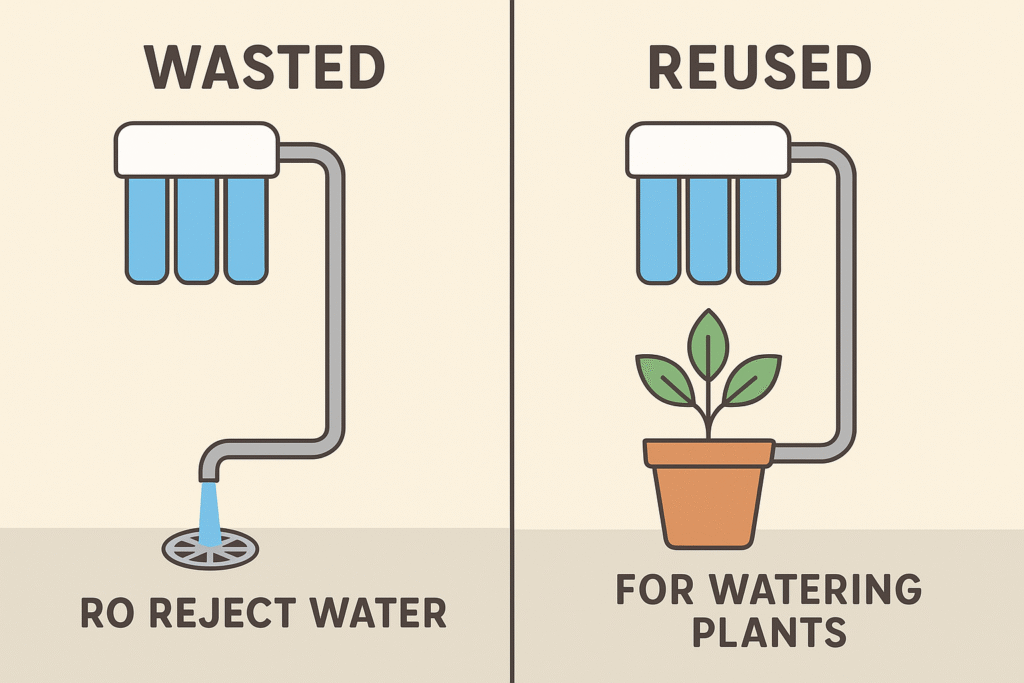
⚠️ Risks
- High salt content: Can stunt growth or damage sensitive plants.
- Soil imbalance: Continuous use may harden soil or reduce fertility.
- pH variation: May not be ideal for vegetables or delicate flowers.
Which Plants Can Tolerate RO Reject Water?
Here’s a quick reference list:
🌱 Plants that tolerate reject water (with dilution):
- Succulents (aloe vera, cactus)
- Bougainvillea
- Marigold
- Hibiscus
- Coconut, date palm
🌿 Plants that should avoid reject water:
- Leafy greens (spinach, coriander, lettuce)
- Indoor plants (money plant, peace lily)
- Root vegetables (carrot, beetroot, radish)
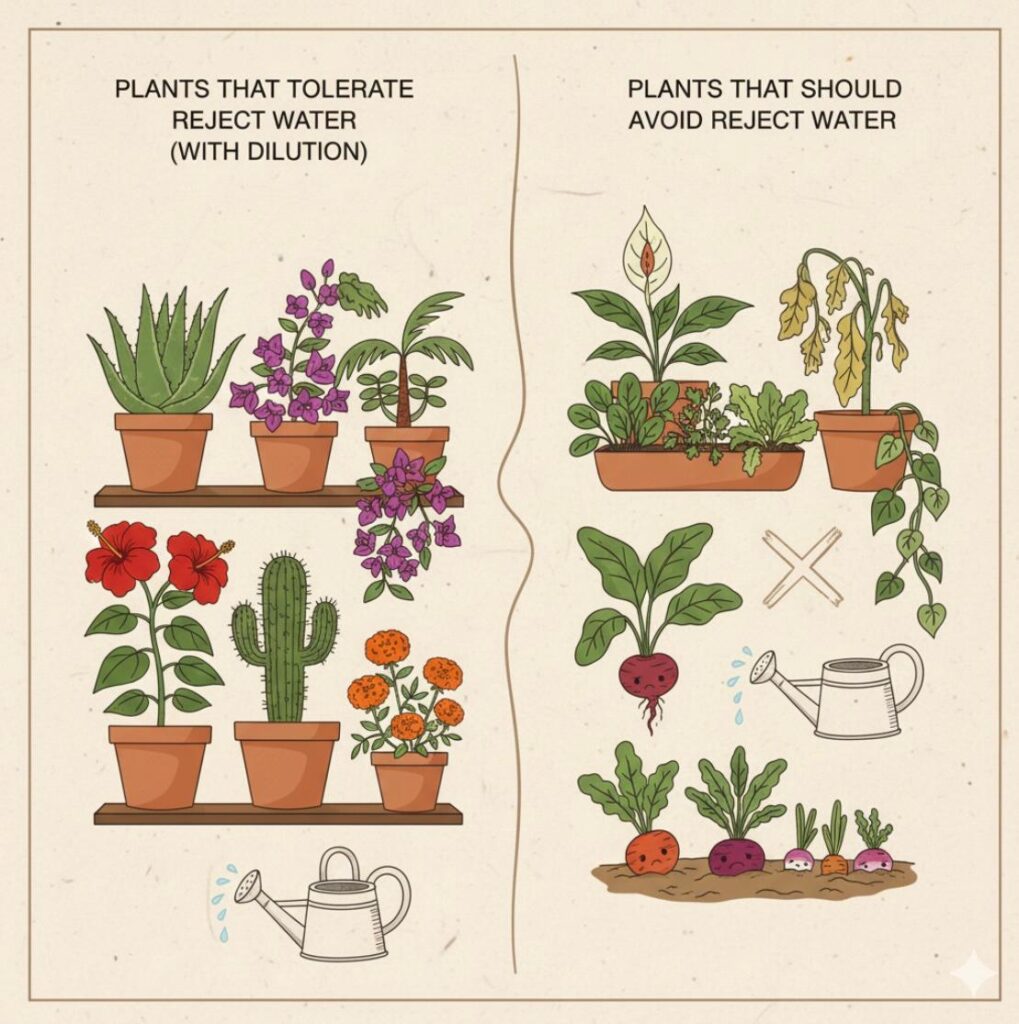
Step-by-Step: How to Safely Use RO Reject Water for Gardening
- Collect the reject water in a clean container/tank.
- Check TDS using a digital TDS meter (ideal <1500 ppm for diluted use).
- Dilute with fresh water in a 1:1 or 1:2 ratio.
- Test on a small patch or one plant before widespread use.
- Rotate usage (alternate with normal water) to prevent soil salinity.
- Observe plants for signs of stress (yellowing, stunted growth).
- Adjust or stop if negative effects appear.
Alternative Uses Beyond Plants
If gardening is not ideal, RO reject water can be reused in other ways:
- Floor and bathroom mopping
- Car washing
- Toilet flushing
- Laundry (pre-rinse)
- Outdoor cleaning

Comparison Table: Safe vs Unsafe Uses of RO Reject Water
| Safe Uses | Unsafe Uses |
|---|---|
| Mopping & floor cleaning | Drinking water |
| Car washing | Cooking |
| Toilet flushing | Washing clothes (final rinse) |
| Gardening (diluted, hardy) | Watering delicate indoor plants |
Pro Tips to Maximize RO Water Savings
- Use a collection tank like Aquasave RO for easy storage.
- Label reject water containers to avoid confusion with drinking water.
- Schedule gardening days when reject water is available.
- Share excess water with neighbors for community gardens.
Conclusion & Call-to-Action
So, can RO reject water be used for plants?
Yes—if used carefully and selectively. While not suitable for all plants, reject water can be a sustainable resource when diluted and reused wisely.
👉 Next step: Don’t let those liters go to waste. Start collecting, testing, and reusing today.
FAQs
Q1. Can RO reject water harm soil?
Yes, if used continuously without dilution—it can increase soil salinity.
Q2. How often should I use reject water for plants?
Use occasionally, alternating with fresh water to protect soil health.
Q3. Is RO reject water good for washing clothes?
It can be used for pre-rinse, but avoid final rinse to prevent stiffness.
Q4. Can I use RO reject water for cooking?
No, it contains dissolved salts and impurities unsafe for consumption.
Q5. Do I need to test reject water before using on plants?
Yes, a TDS meter helps decide if dilution is necessary.
Turn Waste into Value with Aquasave
Turn RO reject water into daily savings.
Aquasave—India’s first, best, and leading dedicated brand in everyday water conservation—lets you capture RO ‘waste’ for floors, bathrooms, and plants. Our tanks are made for durability with food-grade plastics, robust hardware, and strict leak testing—made with love in India.
👉 Try it today: Shop Aqua Save RO https://aquasave.in/




